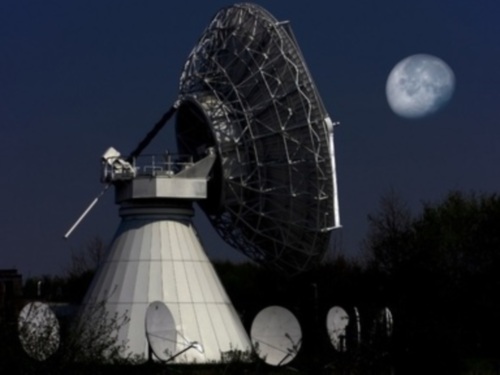A team of engineers and scientists from MIT and NASA has demonstrated for the first time that data communication technology can provide those in space with the same level of data connectivity that people on Earth can have.

Even more impressive is that this was not a simple demonstration of shooting a TV channel signal into space to see if it would get picked up. Rather, the researchers were actually able to show that today’s technology can facilitate large data transfers and high-definition streaming, too.

The laser-powered communication uplink between the Earth and moon breaks all previous transmission speeds achieved by RF signals—by a factor of 4,800.
The group was able to do this vis-à-vis four separate, ground-based telescopes at a terminal in New Mexico. Each one sends an uplink signal to the moon by way of a laser transmitter that sends information as coded pulses of invisible infrared light into each telescope (results in a total of approximately 40 watts of transmitter power).
A bit more specifically, the group was able to transmit data across the 384,633-kilometer distance between the Earth and the moon at a rate of 19.44mbps, with a download rate of 622mbps. Impressive, sure, but this was no easy feat. “Communicating at high data rates from Earth to the moon with laser beams is challenging because of the 400,000-kilometer distance spreading out the light beam,” says Mark Stevens of MIT Lincoln Laboratory. “It's doubly difficult going through the atmosphere, because turbulence can bend light — causing rapid fading or dropouts of the signal at the receiver.”
Consider this: each telescope transmits their beam of light through a different column of air. This means each one is experiencing different bending effects from the atmosphere. This, actually increases the chance that at least one will hit the receiver attached to the satellite currently orbiting the moon. This receiver-carrying satellite also has with it a telescope, which collects the laser beam and focuses it into an optical fiber. From there, a photodetector turns the pulses of light into electrical pulses, which are then converted into data.
The technology, as it stands today, is nowhere near as accurate as it should be — less than a billionth of a watt from the 40-watt signal is received by the satellite.
The good news: that’s about ten times the amount of signal needed for reliable communications.
While the group’s findings have already been detailed by the Optical Society, the NASA / MIT researchers will also present their findings at the CLEO laser technology conference on June 9. There, they are expected to discuss the importance of the lasers being able to operate through thin clouds in the Earth's atmosphere, and also explain that, while the system has been designed for near-Earth missions, they predict it’ll also be able to be used on deep-space missions to Mars and other planets.
Story via wired.co.uk
Advertisement





